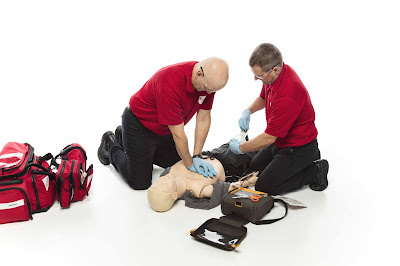How First Aid Helps to Prepare for an Anaphylaxis Emergency?
The first aid course Brisbane-wide helps individuals to deal with any kind of emergency. Anaphylaxis is also a serious allergic reaction that can be life-threatening if immediate first aid is not provided to the victim. In this blog post, we will discuss some important tips on how to deal with anaphylaxis emergencies.
First aid course in Melbourne teaches how to deal with the allergy
First aid course teaches how to deal with the allergy. It teaches you how to manage the signs and symptoms of anaphylaxis, who are at risk for anaphylaxis, what should be done when someone has anaphylaxis and what should not be done when someone has anaphylaxis?
Basic life support techniques
Basic life support techniques include CPR, an automated external defibrillator (AED), a pulse oximeter, and an EpiPen.
- Cardiopulmonary resuscitation (CPR) uses chest compressions to force oxygenated blood through the body. This is done when someone's heart has stopped beating normally, which can cause brain damage or even death within minutes if not treated quickly enough. A certified first-aid person can perform CPR by pressing down on the middle of a choking victim's chest about 100 times per minute until help arrives or paramedics arrive on the scene with an automatic external defibrillator (AED).
- Automated External Defibrillators (AEDs) are used in hospitals and other medical centers to assist doctors with diagnosing patients who have had a cardiac arrest and need immediate medical attention. They're also available for purchase online for home use; however, it's important to note that only certain people should attempt to use one: those trained in their use must follow specific guidelines when choosing devices suitable for different age groups based upon weight limits established by manufacturers.
Tips for dealing with anaphylaxis emergency
- Call for an ambulance.
- Remain calm and reassure the person who is having anaphylaxis that they will be okay
- Keep them still, especially if they are distressed or have difficulty breathing.
- Keep them warm by covering their skin with a blanket or jacket, but not directly over their mouth and nose (this could cause them to suffocate)
- Position their head lower than their heart in case they vomit or faint
- Clear the airways by loosening tight clothing around the neck and chest area, tilting their head back slightly so that any mucus or saliva drains out of their mouth away from the windpipe, and checking for any blockages in the throat using a soft cloth if necessary
- Do not give anything by mouth – even water! If need be, use a sterile saline solution to moisten lips/mouth without swallowing (though don't force this)
The first aid course helps individuals to deal with any kind of emergency.
In the first aid course Brisbane-wide, you will learn how to recognize and deal with several types of emergencies. The course teaches individuals what first aid is, how to provide it and when they should call an ambulance or other emergency services. It also teaches them how to prepare themselves if they need medical help.
It can be taken as part of general education or as a career-focused program if you want to become a paramedic, nurse, doctor or lifeguard. The courses are available at community colleges and high schools. However, some programs offer online certification for those who don’t have time for traditional classes (or who don’t live close enough).
Enrolling in the first aid course Brisbane-wide is easy to understand and offers a great opportunity for individuals to learn about emergencies. The courses teach in-depth about the lifeline support techniques, medical kits, and dos and don’ts during anaphylaxis emergencies.




Comments
Post a Comment